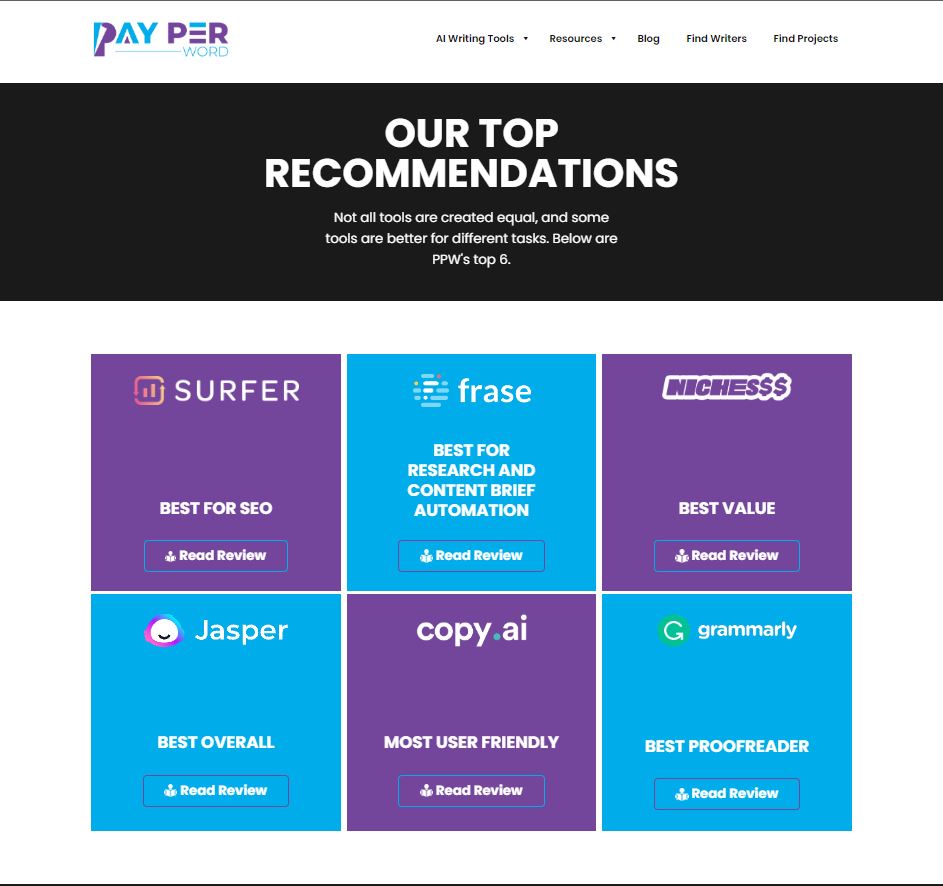Whether you are a freelancer with 20 years of experience, a content agency owner with hundreds of writing clients, or a student looking to use your laptop and writing ability to earn some extra money, there is a good chance you have come across or heard about the advances taking place in the AI writing space.
With a plethora of tools coming to the market in the last 12 months, it’s becoming easier for human writers to use AI to assist with their writing workload.
For some clients, this will be great news as they love that this technology can take over tedious, repetitive tasks, giving you more time for creative work. The problem is not all clients are thrilled about this information – some don’t know how to respond, others may feel like you don’t deserve the same pay level, and some doubt the high-quality content that an AI-powered writing tool generates. This is becoming so prevalent that many in the writing industry are referring to this as “the talk.” So how should content writers handle this growing situation?

What is an AI-Powered Writing Tool, and How Can They Help You Become a More Efficient Writer?
First, let’s discuss what an AI writing tools are and how they can be used.
AI writing tools come in many different forms, but the goal is always the same – to help you write better and faster. They can generate different types of content that you may need. May it be social media posts, sales emails, Facebook ads, and more. All AI-generated content are original content, so you can be sure that the outputs your getting aren’t plagiarized.

Some of the more popular AI writing tools on the market today include Jasper, Copy-Ai, ClosersCopy, Frase, and Grammarly. These tools can help with things like grammar, spelling, research, content brief creation, content idea generation, article structuring, and of course, writing content!
For example, if you are a freelance writer who often writes blog posts for your clients, you can use an AI tool like Grammarly to ensure that all of your tenses are correct and that there are no grammatical errors. This can free up valuable time that you can then use to focus on other aspects of your writing, such as coming up with new ideas or conducting research. Here are some additional examples of tasks these tools can be helpful:
- Proofreading – AI writing tools can help to catch grammar and spelling errors, which can save time when editing documents.
- Research – The days of having 48 tabs open in your browser while writing are over. Now you can use a writing assistant to help with things like finding data, statistics, and quotes for your article.
- Outlining – Many AI writing tools can help create outlines for your essays or articles, making the writing process simpler and less time-consuming.
- Editing – Once your document is written, you can use AI editing tools to help improve the readability and flow of your text.
- Brainstorming- If you have trouble coming up with ideas for your next article or blog post, try using an AI brainstorming tool. This can help to generate new ideas and get your creative juices flowing.
- Content Production – Many AI writing tools can help you create content briefs, making it easier to communicate your ideas to your writer.
While this all sounds amazing, these tools create a weird dynamic for writers. Many writers find that if they let a client know they are using tools to make their work easier, the client may feel the writer should not be compensated the same way as if they were writing without the assistance of AI.

This article aims to help you have “the talk” with your clients in a respectful, honest, and open way. Here are a few tips on how to inform your clients that you will be using AI writing tools:
- Be upfront about it – The best way to approach this conversation is to be upfront and honest with your clients from the start. Let them know you are using AI writing tools and explain how they can benefit from it. This will help to set the tone for the rest of the conversation.
- Explain how the tools will help – Once you have let them know that you are using AI writing tools, take some time to explain how exactly these tools will help with the writing process. This will help ease any fears or concerns they may have about using these tools. Be detailed in explaining the benefits of the ai tools. Do not just focus on the benefits to the person using the tools (you!) but also be sure to focus on how the quality of the content will increase, which benefits the client!
- Reassure them that you are still in control – One of the main concerns clients may have is that they will lose control of the content if you use AI writing tools. We have also found that many clients have a totally wrong impression about AI tools. Be sure to let them know that you are still very much in control of the writing process and that the tools are simply there to assist you. It is AI ASSISTED content. Putting any person behind the wheel of a race car will not result in amazing driving. Similarly, the power of these tools can only be harnessed by someone with the skills and ability to use them properly.
- Have a portfolio and be sure it’s impressive– Results, facts, and figures are hard to argue with. A strong portfolio showcasing your writer’s ability will go a long way in convincing clients that you know what you are doing. Be sure to highlight which pieces were created using AI. Don’t be afraid to focus on the results you have achieved with previous clients by using AI tools.
- Offer references – What better way for a clients’ concerns to be alleviated than to receive a personal recommendation from a satisfied customer? If you have used AI writing tools on past projects, see if any of your clients would be open to being used as a reference. This will help new clients understand that you are not just using these tools because you are lazy but because they genuinely help improve your work quality.
- Assure the client there’s no chance of plagiarism – Many client’s automatically worry about about plagiarism when they think about AI writing tools. After all, if the machine is doing the writing, how can it be sure that the content is original? Be sure to explain that many safeguards are in place to ensure that all content created is 100% original. In addition, most AI writing tools can provide a report highlighting the authenticity of a piece of writing. Include these reports when submitting your work, so the client knows it is original.
- Keep the lines of communication open – After you have had “the talk,” be sure to keep the lines of communication open with your clients. This will help to ensure that they are comfortable with using AI writing tools and that they understand how it benefits them and the writing process. In addition, if you ever have any questions or concerns, be sure to reach out to your clients so that you can address them head-on.
- Find your clients on PayPerWord.com – On PayPerWord.com, the clients not only know about AI writing, but they are also looking to hire writers who specialize in using these tools. So stop wasting time trying to get a horse to drink, and find the people who are already at the watering hole!

By following these tips, you can help ease any fears or concerns your clients may have about you using AI writing tools. Remember, to be honest, upfront, and always emphasize the quality of the content you will be providing.
If you do this, you should have no problem convincing your clients that using AI writing tools is the right decision for both of you! Be sure to visit PayPerWord.com and create an account to search for thousands of available jobs from countless companies looking to hire the best AI writers on the planet.

